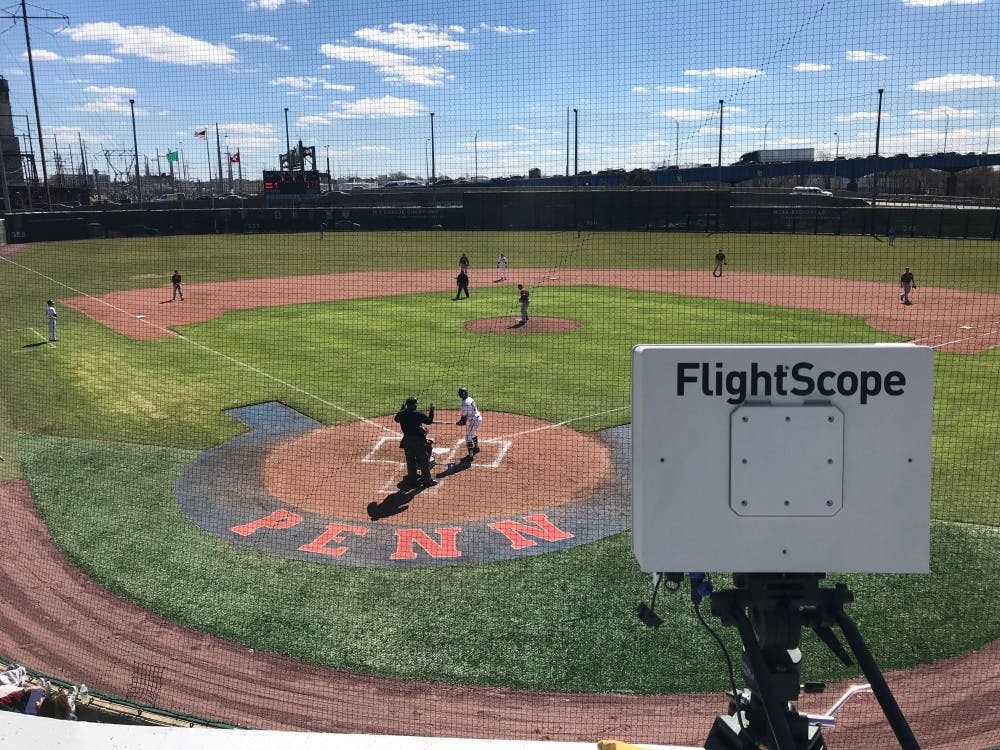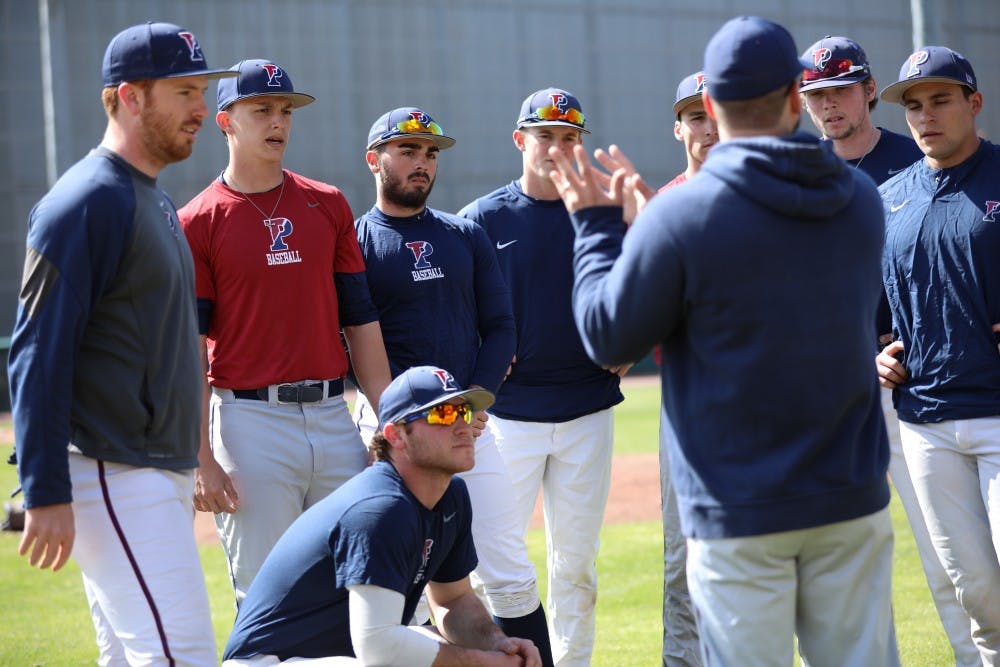
Penn baseball will enter Ivy League play as the only team in the conference to be using FlightScope Strike, a portable tracking radar system. | Photo From David Mayberry
In a time when a large number of collegiate programs around the country are fully committing to analytics, Penn baseball is following suit.
Now, as the first Ivy League squad armed with FlightScope Strike, a portable tracking radar system, the Quakers are beginning to gather more data than ever before. The machine has so far been utilized to track the hitters and pitchers in offseason practices, and it's just starting to be used in games as well.
Pitching metrics such as horizontal and vertical break, spin rate, and revolutions along with hitting metrics such as launch angle, exit velocity, and carry distance are becoming increasingly important for improving player performance, and FlightScope Strike tracks all of these and more.
The FlightScope Strike machine uses Doppler radar to track the trajectory of pitched and batted balls. After each pitch, scores on all of the various metrics appear on a tablet included with the machine for the coaches to analyze in real time and give the players live feedback.
“It’s been helpful in letting our guys know their feedback immediately,” assistant coach Will Kaufman said.
After a full practice or game, the data for all hitters and pitchers is compiled in a spreadsheet for the coaches to analyze and create visualizations from.
It won’t just be the coaches pouring over this data, however. Penn Sports Analytics, which mainly assists with data analysis for Penn men’s basketball, is entering the baseball world by delving into the FlightScope data.
“Those guys are really bright, and they’re great to work with, I think we’ll have something a bit more structured going into next year,” coach John Yurkow said.

The adoption of this technology represents an overall shift in the coaching philosophy of the team. The most successful hitting techniques in recent years have placed an emphasis on getting the ball up into the air to increase home runs and balls hit to the outfield, as opposed to the traditional method of cutting down on the ball.
The early returns for Penn baseball have been promising on offense. As the Quakers near the start of Ivy play, the offense is averaging just over nine runs per game. Through their early nonconference slate last season (15 games), they averaged just over 4.5 runs per game.
This could be explained by the level of competition the hitters have faced or inflation due to huge offensive outbursts, such as a 19-run game against Lafayette, but it’s still a significant jump in overall offensive production.
Maybe it’s not just the availability of data that has changed for Penn this season.
“[We've been] spending a lot of time as a group, coming up with an offensive philosophy and a culture that we’ve created,” Yurkow said. “We have meetings once a week to sit down and talk as an offensive group and see what we want to be good at, what we want to be known as, as an offense.”
There likely won’t be a significant uptick in offensive production due to insights gleaned from the FlightScope data this season, but gathering this data over the course of this year and into the fall could be meaningful in shaping the team’s approach next year.
“Hopefully the more we use it and the more data we collect, we’ll be able to use those numbers and make some adjustments,” Yurkow said.
The data analysis on both the pitching and hitting sides will most certainly need a wider breadth of information before noticeable change can be made. Regardless, Penn baseball is on the right track and ahead of the curve in the Ivy League.
The Daily Pennsylvanian is an independent, student-run newspaper. Please consider making a donation to support the coverage that shapes the University. Your generosity ensures a future of strong journalism at Penn.
Donate






